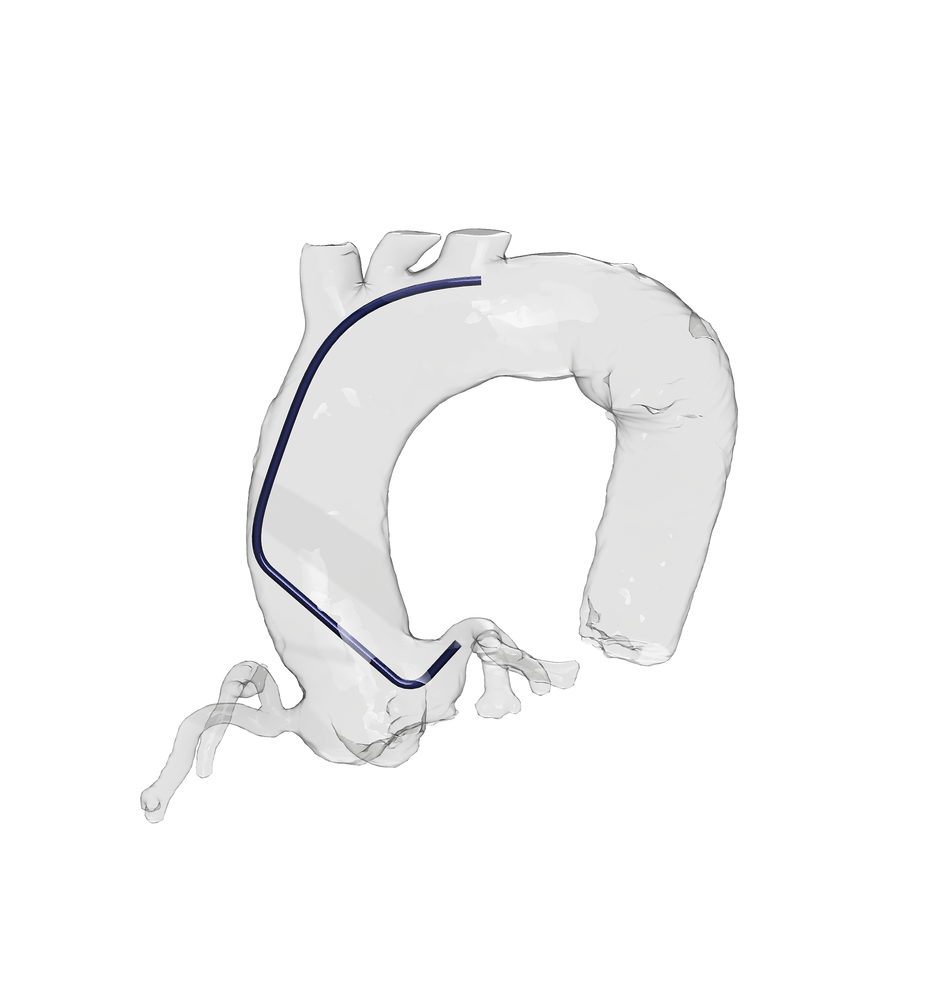Concept
-Reduce trial and error during endovascular treatments by preoperative simulations-
CEO has long been a clinician involved in percutaneous coronary intervention (PCI) and other cardiovascular interventional treatments. Driven by the desire to reduce trial and error during procedures,
we have continually sought ways to improve outcomes.
Currently, we are developing a program that selects the most suitable guiding catheter from a patient's cardiac CT scan for PCI, aiming to shorten treatment time and increase the success rate,
ultimately contributing to better patient care.

STORY
CEO, noticing the lack of tools available for selecting the appropriate guiding catheter in PCI, questioned the current reliance on in-procedure adjustments and the frequent use of auxiliary devices. This led him to explore simulations using cardiac CT.
Initially, the guiding catheter was faithfully recreated using 3D CAD, but merging this with cardiac CT data in 3D CAD simulations did not yield successful results. It was impossible to accurately visualize how the guiding catheter would position itself and behave within the aorta during the procedure.
To address this, we experimented with incorporating 3D data of cardiac CT and guiding catheters into Virtual Reality (VR), allowing for catheter manipulation and fitting within a virtual space. This approach proved effective in providing high-precision simulations, especially for those familiar with actual PCI procedures, and it has contributed significantly to a variety of cases.
While experimenting with automating the process of creating polygon files from cardiac CT—a known challenge of VR simulation—CEO encountered our CTO. This led to the development of SWORD AORTA, an application that uses AI to extract coronary arteries and aorta from cardiac CT and convert them into polygons, thereby accelerating VR simulations. This application has been instrumental in post-TAVI PCI, endovascular aneurysm repair (EVAR), left atrial appendage closure (LAAC), pediatric cardiovascular interventions, and more.
However, recognizing that VR has limitations in daily clinical use due to its lack of versatility, we saw the need to develop a more applicable system for clinical settings. By analyzing the geometric algorithms used in VR simulations, we devised a method to leverage AI for simulation purposes. Our company was founded in May 2023 with the goal of developing this application.


Hirooki Higami
CEO
M.D., Ph.D.
Fellow of the Japanese Association of Cardiovascular Intervention and Therapeutics (CVIT)
Fellow of the Japanese Society of Internal MedicineFellow of the Japanese Circulation Society (JCS)
Supervisory doctor of thoracic aortic endovascular repair (cTAG [GORE], Zenith TX series [COOK])
Supervisory doctor of abdominal aortic endovascular repair (Zenith AAA [COOK], Excluder [GORE], Endurant [Medtronic], and AFX [Endologix])
Doctor of Philosophy in Medicine (Kyoto University)
CTO
Kazuhiko Matsumoto
[Patents]
• Medical image processing apparatus and method: US patent 8311300
• Image processing method: US patent 8013856
• Image processing system for volume rendering: US patent 8004516
• Diffusion weighted image processing apparatus and recording medium for recording image
analysis program: US patent 7974451
• Image processing method and computer readable medium for image processing: US patent
7907763
• Changing the display angle of visualized tubular tissue: US patent 7873197
• Image processing method and computer readable medium for image processing: US patent
7860284
and others. More than 100 granted in total.

M.S., Information Engineering, University of Tokyo
Company profile
Company NAME
AnrealTwin Co., Ltd
Capital
18,000,000 JPY
Establishment
May 2, 2023
Business Details
Development of application for endovascular treatment
Medical device development consultation
AI development for intravascular imaging
Preoperative assessment of challenging cases for endovascular therapy